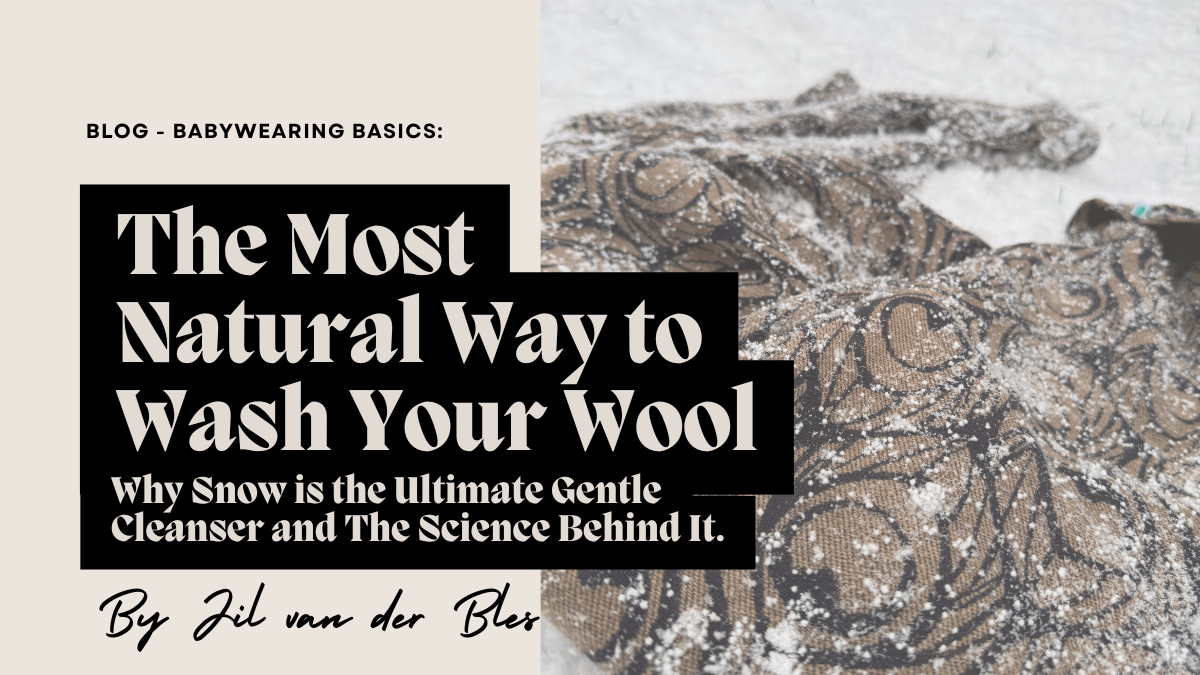The Most Natural Way to Wash Your Wool

Why Snow is the Ultimate Gentle Cleanser and The Science Behind It.
The Most Natural Way to Wash Your Wool: Why Snow is the Ultimate Gentle Cleanser
Washing wool can be tricky, but what if nature already provided the perfect way to refresh and clean your wool items? Enter the snow bath—a method as old as time but often overlooked in modern laundry routines. In this blog, we’ll explore why washing wool with snow is not only effective but also the most natural way to care for your precious fibers.
The Science Behind Snow Cleaning Wool
Wool is a self-cleaning fiber, thanks to its natural lanolin and unique structure. However, a periodic refresh can help maintain its longevity and freshness. Snow provides a gentle yet effective way to do just that, and here’s how:
1. The Cold Shock Effect
Wool fibers have tiny scales, similar to human hair. When exposed to the cold, these scales contract, helping to release dirt and debris trapped inside the fibers. The sudden temperature change also encourages oils and dust to break away naturally, making them easier to remove.
2. Capillary Action & Absorption
Fresh, powdery snow is porous and slightly absorbent, meaning it can pull dirt and oils from wool without oversaturating it. This mimics a dry-cleaning effect without using any harsh chemicals.
3. The Mechanical Cleaning Effect
Light, fluffy snow acts as a gentle scrub. When wool is rubbed against it, the tiny ice crystals create a mild exfoliating effect, helping to lift dirt from the surface of the fabric. This is similar to using a natural abrasive but is much softer and won’t damage delicate fibers.
4. Oxygenation & Natural Deodorizing
Snow is rich in oxygen, which provides a natural bleaching and deodorizing effect. This helps neutralize odors and freshen wool items without the need for detergents or soaking.
5. Antibacterial Properties of Snow
Cold temperatures slow bacterial growth, and fresh snow is naturally low in bacteria. While snow washing won’t completely disinfect wool, it significantly freshens it up without the risk of overwashing.
How to Wash Your Wool in Snow
To get the best results, follow these simple steps:
✅ Use fresh, clean, powdery snow. Avoid slushy or dirty snow, as it won’t have the same cleaning effect.
✅ Lay your wool item on top of the snow or lightly press it in—don’t soak it, as too much moisture can harm the fibers.
✅ Gently pat or rub the wool into the snow to lift dust and dirt.
✅ Let it sit for 15-30 minutes—enough time for the cold to contract the fibers and lift impurities.
✅ Shake off excess snow and hang the wool out to air dry in cold temperatures to remove any remaining moisture.
Why Snow is Better Than Water for Wool
Eco-friendly & detergent-free → No need for harsh soaps that can strip wool’s natural lanolin.
Protects the fibers → Unlike hot water, snow won’t cause wool to shrink or felt.
Refreshes without overwashing → Wool doesn’t need frequent washing; snow cleaning helps extend its lifespan.
When to Avoid Snow Washing
⚠️ Doesn’t remove deep stains → Snow washing is great for refreshing wool but won’t work on heavy stains or grease buildup.
⚠️ Avoid dirty or slushy snow → Using old or contaminated snow can add dirt instead of removing it.
⚠️ Not ideal for delicate wool → Some fine merino or cashmere pieces may need gentler care.
The Verdict: Snow Washing is a Natural Refresh for Wool
Using snow to clean wool is a gentle, effective, and eco-friendly way to refresh fabrics while preserving their structure and softness. While it won’t replace deep washing, it’s an excellent method for maintenance and deodorizing between washes.
If you’ve never tried a snow bath for your wool, now’s the time to give it a go! And if you’re curious about other natural cleaning methods, check out our latest posts for more eco-friendly fabric care tips.
Categories: : Babywearing Basics, Babywearing In Everyday Life
 Jildou Van der bles
Jildou Van der bles 






